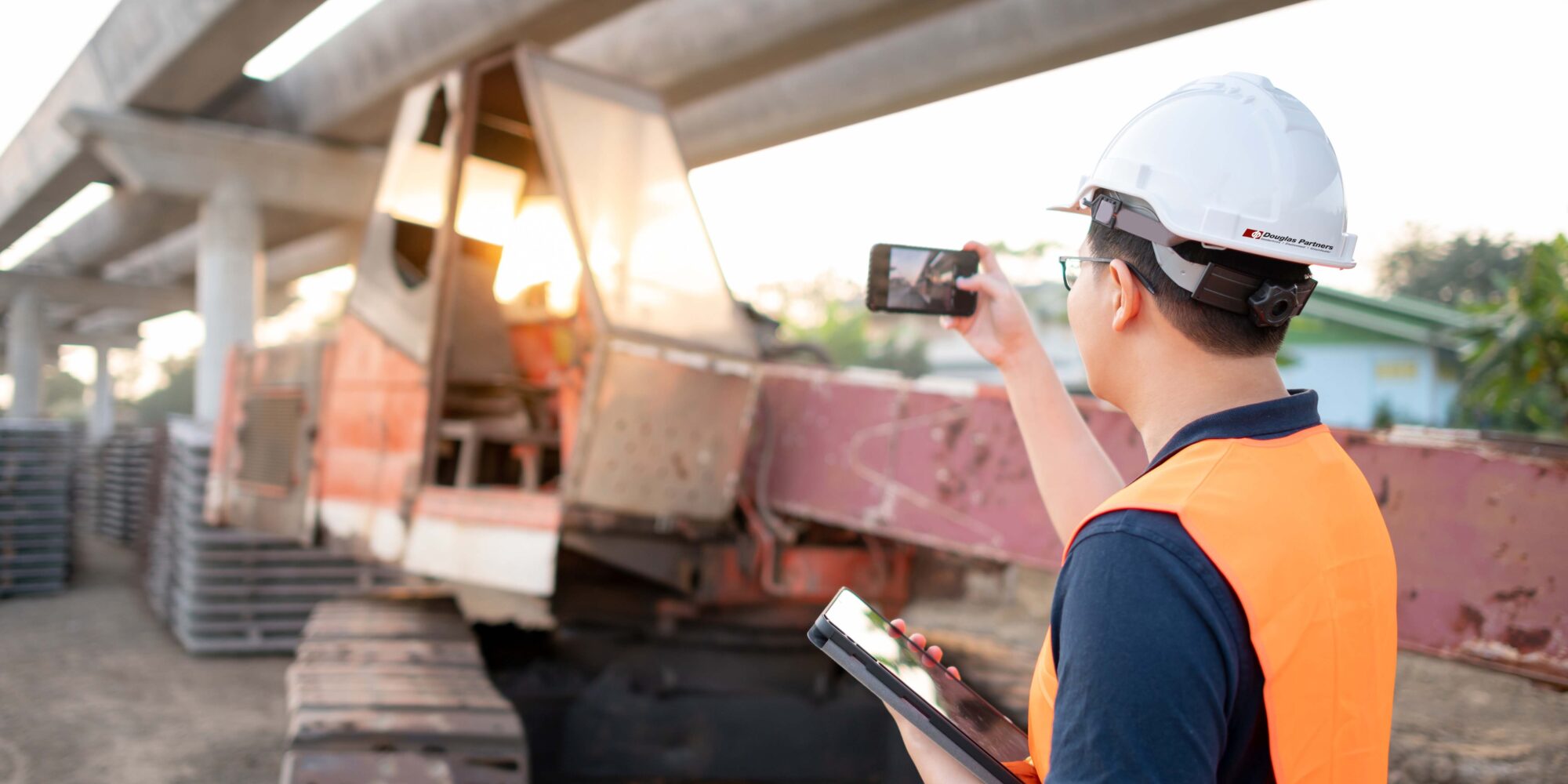A Biased View of Geotheta
A Biased View of Geotheta
Blog Article
Getting My Geotheta To Work
Table of ContentsGeotheta for BeginnersThe Main Principles Of Geotheta Not known Details About Geotheta All About GeothetaSome Ideas on Geotheta You Should Know

They conduct site investigations, collect samples, perform laboratory tests, and examine data to examine the viability of the ground for construction projects - Geo Tech Engineering. Based upon their searchings for, geotechnical designers give recommendations for foundation style, incline security, keeping structures, and mitigation of geotechnical dangers. They collaborate with other experts, such as designers, architectural engineers, and building teams, to make sure that geotechnical considerations are integrated into the overall job style and execution
By examining the actions and residential properties of soil and rock, they can determine prospective geotechnical risks such as landslides, dirt negotiation, or slope instability. Their proficiency helps prevent failings or crashes that can jeopardize lives and home. Here are some detailed duties and responsibilities of a geotechnical designer: Website Investigation: Geotechnical engineers conduct website examinations to gather data on subsurface problems.
They translate the information to recognize the residential or commercial properties and actions of the soil and rock, including their stamina, leaks in the structure, compaction features, and groundwater problems. Geotechnical Evaluation and Style: Geotechnical engineers examine the data collected during site examinations to assess the security and viability of the site for construction projects. They perform geotechnical estimations and modeling to examine elements such as bearing capability, settlement, incline security, side earth stress, and groundwater circulation.
The 6-Minute Rule for Geotheta
Structure Style: Geotechnical designers play a critical function in designing structures that can safely support the desired framework. They examine the soil problems and load needs to identify the appropriate structure kind, such as superficial structures (e.g., grounds), deep foundations (e.g (https://trello.com/u/geotheta)., piles), or specialized techniques like dirt enhancement. They think about elements such as settlement restrictions, birthing ability, and soil-structure communication to establish optimum structure styles
They review construction strategies, screen site tasks, and carry out field inspections to validate that the style recommendations are followed. If unpredicted geotechnical problems arise, they analyze the circumstance and offer referrals for remediation or changes to the design. Threat Evaluation and Reduction: Geotechnical engineers analyze geotechnical hazards and threats connected with the project website, such as landslides, liquefaction, or soil erosion.

Partnership and Interaction: Geotechnical designers work very closely with other specialists associated with a project, such as designers, architectural engineers, and construction groups. Efficient communication and cooperation are vital to incorporate geotechnical factors to consider into the overall task layout and building procedure. Geotechnical engineers give technical experience, answer questions, and guarantee that geotechnical needs are satisfied.
The Main Principles Of Geotheta
Right here are some kinds of geotechnical engineers: Structure Designer: Structure designers specialize in designing and assessing foundations for frameworks. They analyze the dirt problems, tons needs, and website attributes to figure out one of the most appropriate foundation type and design, such as shallow foundations, deep structures, or specialized techniques like pile foundations.
They examine the aspects affecting slope security, such as dirt residential properties, groundwater problems, and slope geometry, and establish strategies to stop incline failures and alleviate dangers. Earthquake Engineer: Earthquake designers focus on assessing and developing structures to stand up to seismic pressures. They evaluate the seismic risk of a site, review dirt liquefaction capacity, and create seismic style requirements to guarantee the safety and security and durability of structures during earthquakes.
They execute field screening, gather samples, and analyze the collected information to identify the dirt residential or commercial properties, geologic developments, and groundwater conditions at a website. Geotechnical Instrumentation Designer: Geotechnical instrumentation engineers concentrate on surveillance and measuring the behavior of dirt, rock, and frameworks. They mount and keep instrumentation systems that keep an eye on aspects such as soil settlement, groundwater levels, incline movements, and structural displacements to analyze performance and provide early warnings of possible issues.
Geotheta Things To Know Before You Get This
They perform tests such as triaxial examinations, combination examinations, straight shear tests, and leaks in the structure examinations to gather data for geotechnical analysis and style. Geosynthetics Designer: Geosynthetics designers specialize in the style and application of geosynthetic materials, such as geotextiles, geogrids, and geomembranes. They utilize these products to improve soil stability, enhance inclines, give drainage solutions, and control disintegration.
They have a tendency to be investigatory people, which suggests they're intellectual, reflective, and investigative. They are interested, methodical, reasonable, analytical, and logical. Some of them are also social, implying they're kind, charitable, participating, person, caring, helpful, understanding, sensible, and pleasant - Geo Tech Engineering.
In the workplace setting, geotechnical designers use specialized software application tools to do computations, create layouts, and assess information. They prepare reports, This Site review task requirements, interact with clients and employee, and coordinate project activities. The workplace setting provides a helpful atmosphere for research, analysis, and collaboration with various other experts associated with the job.
The Geotheta PDFs
They frequently visit job sites to carry out website examinations, examine geotechnical conditions, and collect information for analysis. These brows through involve traveling to different areas, in some cases in remote or tough surfaces. Geotechnical designers may execute dirt sampling, conduct tests, and screen construction activities to make sure that the geotechnical elements of the task are being executed properly.
Geotechnical designers additionally function in specialized geotechnical research laboratories. In these facilities, they perform experiments, carry out examinations on dirt and rock samples, and examine the engineering homes of the materials. Geotechnical research laboratory engineers work extensively in these atmospheres, taking care of screening devices, operating tools, and taping information. They team up with various other lab team to guarantee accurate and reliable testing outcomes.
Report this page